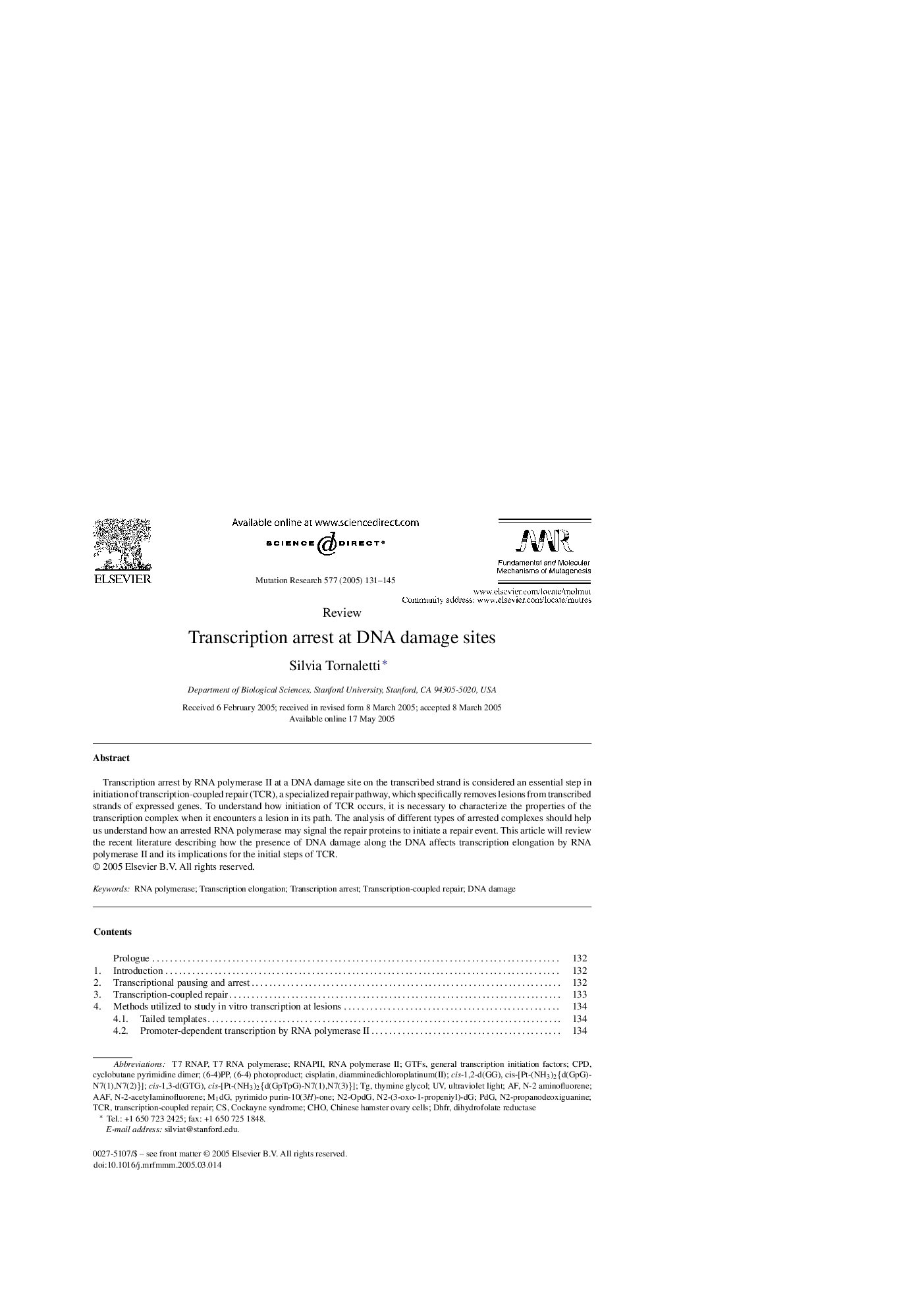| Article ID | Journal | Published Year | Pages | File Type |
|---|---|---|---|---|
| 9909056 | Mutation Research/Fundamental and Molecular Mechanisms of Mutagenesis | 2005 | 15 Pages |
Abstract
Transcription arrest by RNA polymerase II at a DNA damage site on the transcribed strand is considered an essential step in initiation of transcription-coupled repair (TCR), a specialized repair pathway, which specifically removes lesions from transcribed strands of expressed genes. To understand how initiation of TCR occurs, it is necessary to characterize the properties of the transcription complex when it encounters a lesion in its path. The analysis of different types of arrested complexes should help us understand how an arrested RNA polymerase may signal the repair proteins to initiate a repair event. This article will review the recent literature describing how the presence of DNA damage along the DNA affects transcription elongation by RNA polymerase II and its implications for the initial steps of TCR.
Keywords
N-2-acetylaminofluoreneT7 RNAPRNAPIITCrGTFSAAFRNA polymerase II(6-4) photoproductcpddhfrT7 RNA polymeraseRNA polymeraseDNA damageChoTranscription-coupled repairThymine glycoldihydrofolate reductasecyclobutane pyrimidine dimerChinese hamster ovary cellsCockayne syndromecisplatinTranscription elongationPdGultraviolet light
Related Topics
Life Sciences
Biochemistry, Genetics and Molecular Biology
Cancer Research
Authors
Silvia Tornaletti,
